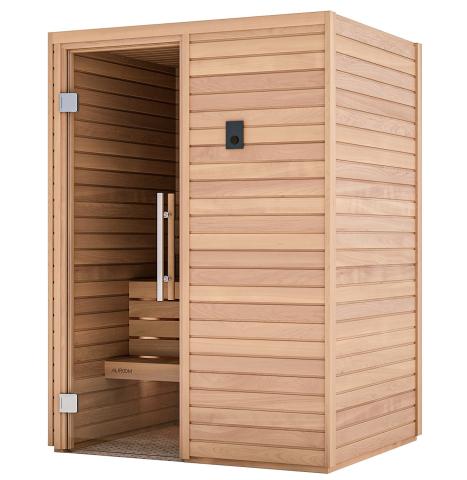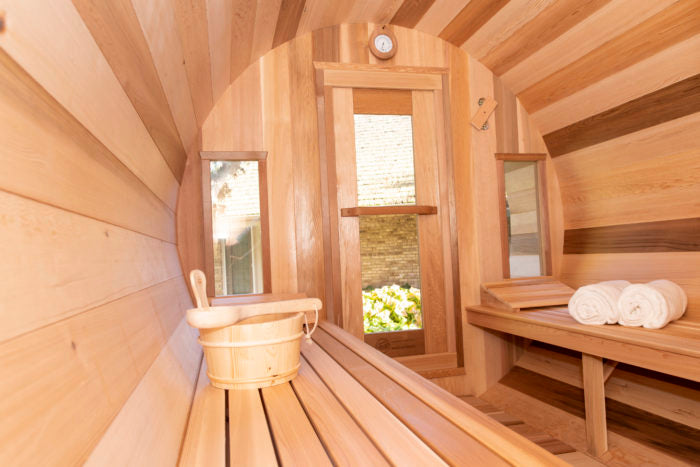Unknown Facts About Traditional Sauna
Unknown Facts About Traditional Sauna
Blog Article
Examine This Report on Traditional Sauna
Table of Contents6 Easy Facts About Traditional Sauna ShownThe Definitive Guide for Traditional SaunaExcitement About Traditional SaunaTraditional Sauna for BeginnersThe Traditional Sauna PDFs
A lot of the weight shed in a sauna is water loss and is re-gained upon rehydrating. Nonetheless, undeniably sauna can be an important component of a healthy and balanced weight loss program. To check out the differences in between standard and IR saunas, I will separate these right into proven, theoretical, and produced differences.Thus, the hottest factor in the saunawhich is at the ceiling directly over the sauna heateris generally in between 185 and 190 F. Claims that a traditional sauna goes beyond 200 F is just not true and not suitable for electric saunas offered in the US. The temperature level for a far-infrared sauna is typically established between 120 and 140 F; nonetheless, unlike the conventional sauna, the objective in and IR area is not to achieve a high temperature level.
As a result of this, the temperature level distinction is practically unnecessary, because extreme sweating results in both sauna types, yet the method of heating up the body is various. In an IR sauna the bather will feel warm and will certainly sweat profusely, yet at much lower temperature levels (Traditional Sauna). Hence, if the goal is to invest longer periods of time in the sauna, the IR sauna is a great selection
When a conventional sauna has actually been effectively heated, the sauna walls are cozy, the air temperature has actually accomplished set temperature level and the rocks are super heated. As an intriguing side note, the warmed wall surfaces and the rocks are sending out far-infrared heat, integrated with the heated air, to produce an "wrapping up warmth".
The Best Strategy To Use For Traditional Sauna

When the high temperature is attained, the components cycle on and off to preserve the high temperature. Most traditional sauna customers take pleasure in pouring water over the rocks to create vapor to increase sauna humidity degrees. The benefits of pouring water over the rocks consist of: making the space much more comfortable, dampening the nasal flows, and enabling the usage of aromatherapy by blending necessary oils with the water.

When the power enters the body, it triggers the body temperature to boost and inevitably leads to sweat. In an infrared sauna it is very important for the emitters/heaters to continue to be on almost regularly. Since there is no mass of rocks to maintain warmth, the sauna will cool if the emitters turned off.
As stated above, the sauna bather in an infrared space intends to position himself in front of operating emitters to obtain maximum gain from the warm. The home heating time for the two rooms can be extremely various, depending on how the spaces are made use of. For a conventional sauna, a bather must allow 30-40 minutes for the space to attain a desired temperature and Full Report to appropriately pre-heat the rocks.
The Best Guide To Traditional Sauna
A well built sauna will normally attain a temperature level of 150-160 F in concerning 30-40 mins. For hotter temperature levels, the area may need to warm for a longer duration.

Typical saunas have a tendency to be larger (thus make use of even more electrical power) than infrared saunas, although standard saunas are certainly readily available in one and two individual sizes. For a two-person standard sauna, 5x6 or 5x7 dimension is most prominent. The top bench can pleasantly seat 2 or 3 people and is likewise long sufficient to relax during the sauna session.
Traditional Sauna Things To Know Before You Get This
The ordinary cost per kWH of electrical power in the U.S. is around $0.11, so a 4.5 kW heating system will certainly set you back approximately $.50 to run for one hour, if the heater runs continuously find more info for one hour. Commonly a sauna heating system will certainly compete 75% of the initial hour and 50% of succeeding hours on since the elements cycle once the set temperature level is attained.

Ultimately, there is a hardly ever discussed distinction in the social experience between the two areas. While our society has shed a few of the social advantage of the typical sauna experience, it visit homepage can be extremely socially gratifying (Traditional Sauna). From family members time in the sauna, to heart-felt conversations with better halves, to sauna partiesthe traditional sauna experience can cause intimate socializing
5 Simple Techniques For Traditional Sauna
A lot of greater end infrared areas include colored light therapy, noise systems and full-glass fronts.
Report this page